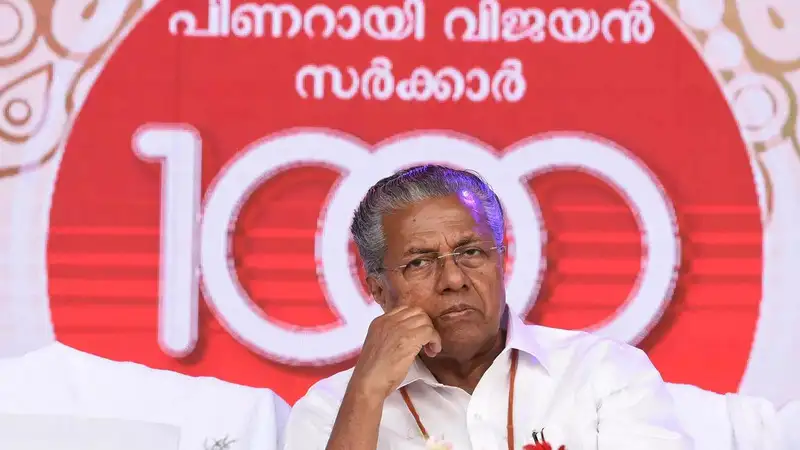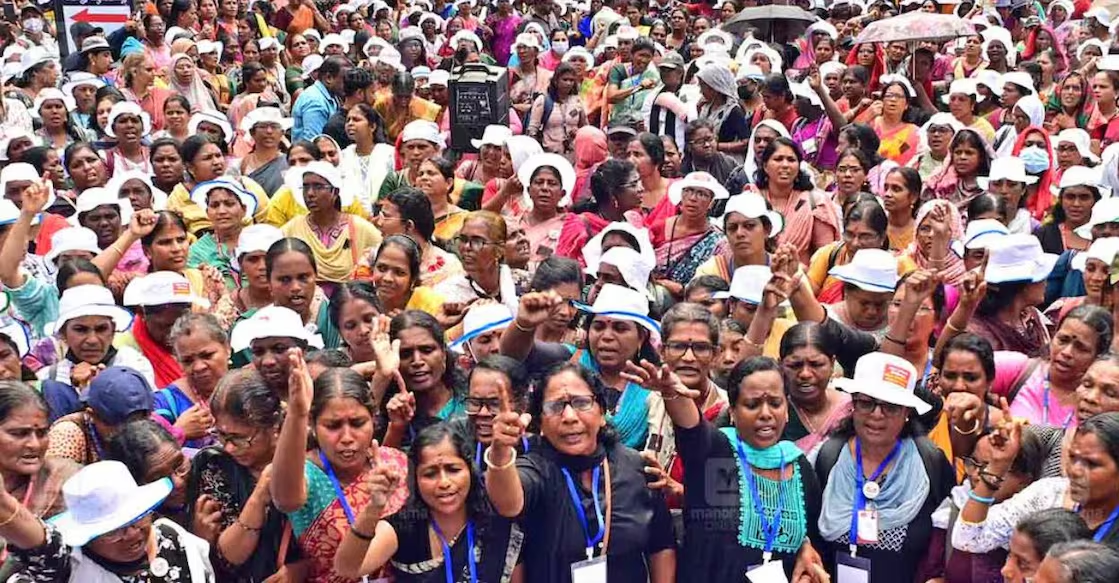The famed ‘Kerala model’ unravels as debt skyrockets, salaries and pensions consume over 75% of the state’s revenues, and borrowing limits tighten
Kerala has long been the golden child in the grand theatre of Indian governance — praised for its social indices, high literacy and robust welfare system. But beneath the applause, a financial reckoning is unfolding. The state’s economic house, built on the pillars of generous welfare and relentless borrowing, is swaying precariously.Why? The answer, some classics still hold up, such as Karl Marx — “The only part of the so-called national wealth that actually enters into the collective possession of modern peoples is their national debt.”Nowhere is this truer than in Kerala, where the debt clock ticks ominously, swallowing revenues and forcing the state into unprecedented cuts. The state government has halved its plan size — from an approved ₹38,000 crore to just ₹19,000 crore — even before the governor ratified the 2024-25 budget.Kerala’s predicament is not sudden — it is the slow-burning consequence of an economic model that prioritises spending over sustainability. More than 75% of Kerala’s revenue is devoured by salaries, pensions and interest payments, leaving little for infrastructure or economic expansion.Economist Mary George laid bare the problem: “87% of our borrowings go into meeting revenue expenses. Only 13% is for capital expenditure. It’s a debt spiral, not an investment strategy.”Between 2016 and 2022, Kerala’s total debt surged from ₹1.8 lakh crore to a staggering ₹3.3 lakh crore — an 80% leap in just five years. Interest payments alone have crossed ₹40,000 crore since 2021, a figure that dwarfs the budgets of many small states.Kerala, a state that champions decentralisation, paradoxically runs one of India’s most centralised bureaucracies. Its workforce is not just large — it is inefficient. With 86% more government employees per lakh population than Karnataka and 25% more than Telangana, the system strains under its own weight.“One agriculture officer in Kerala manages just 141 hectares, while his counterpart in Karnataka oversees 1,425 hectares,” said economist D Narayana. “This is not administration; it’s employment generation at the cost of efficiency.” medium118705968The clerical machinery is even more bloated — the Kerala Public Service Commission employs 1,784 people compared to Karnataka’s 225. Each additional typist, clerk or driver adds to a wage bill that has become an albatross around the state’s neck.Kerala’s reputation as a welfare state was once its greatest strength. Today, it is its Achilles’ heel. In 2011, social security pensions covered 16.2 lakh people. By 2023, the number had exploded to 57.7 lakh. Pension payouts have quadrupled, yet the government struggles to pay beneficiaries on time.Pending pension payments have turned Kerala’s welfare model into an exercise in borrowed time. Four instalments remain unpaid, and with borrowing limits tightening, the state risks defaulting on its commitments.The state’s attempt to bypass borrowing restrictions through the Kerala Infrastructure Investment Fund Board (KIIFB) has backfired. Initially devised as an off-budget funding mechanism, KIIFB’s borrowings are now classified as state debt, further tightening the fiscal noose.Congress MLA and assembly Opposition leader VD Satheesan offered a blunt critique: “When you provide a sovereign guarantee on KIIFB loans, how can you claim they are not state liabilities? We warned about this, but the government was too busy passing the burden onto future generations.”Faced with an economic cliff, the Communist Party of India (Marxist)-led Left Democratic Front (LDF) government has doubled down on blaming the Centre. It claims to have “lost” ₹91,000 crore due to restrictions on borrowing and reductions in revenue devolution. But critics argue that Kerala’s problem is not a lack of funds — it’s a lack of fiscal discipline.Raising service fees and taxes on non-tax revenue streams may offer temporary relief, but they are no substitute for structural reform. The hard truth remains: Kerala’s spending outpaces its income, and without radical changes, collapse is a real possibility.Kerala’s treasury is in a perilous position. In a Supreme Court filing last year, the state government admitted that it might have to shut down treasury operations due to liquidity constraints. By October 2023, ₹26,226 crore in budgetary commitments had already been deferred.“We are running a welfare state on fumes,” said a senior bureaucrat. “The treasury is a dam holding back a flood. But the cracks are widening.” That’s not all. Kerala’s vanishing enterprises are another tale of contradictions. Over the past nine years, the state has seen 42,179 MSMEs (micro, small and medium enterprises) shut their doors, displacing more than 103,764 workers.The LDF government downplays the crisis, insisting those affected have found work elsewhere. Yet, the numbers tell a different story — one of faltering small businesses, even in economic strongholds like Thrissur, Ernakulam and Thiruvananthapuram.At the same time, the government boasts of a meteoric rise in MSME registrations — 343,491 in just three years. Citing improved ease of business and Kerala’s rising BRAP (Business Reforms Action Plan) ranking, officials hail it as a triumph. But the ground reality suggests otherwise.“The surge is largely due to the Centre’s UDYAM registration schemes,” said economist Mary George.In a state where established enterprises crumble, the illusion of MSME growth raises a pressing question — is Kerala truly witnessing a business boom, or merely an accounting sleight of hand?The question is not whether Kerala’s economy is in trouble — it’s how long before the reckoning becomes inescapable. Can the state undertake urgent fiscal and administrative reforms or continue down a path that leads to insolvency?According to experts, pragmatism must take its place, or the ‘Kerala model’ may soon be remembered as a cautionary tale rather than a success story. The myth of infinite borrowing is collapsing. The economy is not a bottomless pot of gold — it is a ledger that must balance.Healthcare heroes unpaid, babus rewardedFor 21 days, voices of Kerala’s ASHA workers have echoed outside the state secretariat in Thiruvananthapuram — 26,140 women demanding three months’ unpaid wages and a raise from their paltry ₹7,000 monthly honorarium.“Every payment comes after a strike,” said S Mini, vice president of Kerala ASHA Health Workers’ Association. “Sometimes, we wait eight months.”Their struggle is met not with sympathy but with delays and excuses. Yet, the working class stands with them. Autorickshaw drivers ferry them for free, voluntary groups provide food and water — support born from shared hardship.The government says it cannot raise ASHA wages, pleading financial distress. Though it professes empty coffers, it has found the means to more than double the salaries of Kerala Public Service Commission members. The chairman’s salary has recently surged from ₹76,450 to ₹2.24 lakh and members will now receive ₹2.19 lakh — up from ₹70,290. Their rent and travel allowances have ballooned as well.The contrast is stark. ASHA workers — the backbone of Kerala’s public health system — must fight for survival, while bureaucrats see their fortunes swell. In the arithmetic of governance, some lives remain heaper than others.
The famed ‘Kerala model’ unravels as debt skyrockets, salaries and pensions consume over 75% of the state’s revenues, and borrowing limits tighten”







